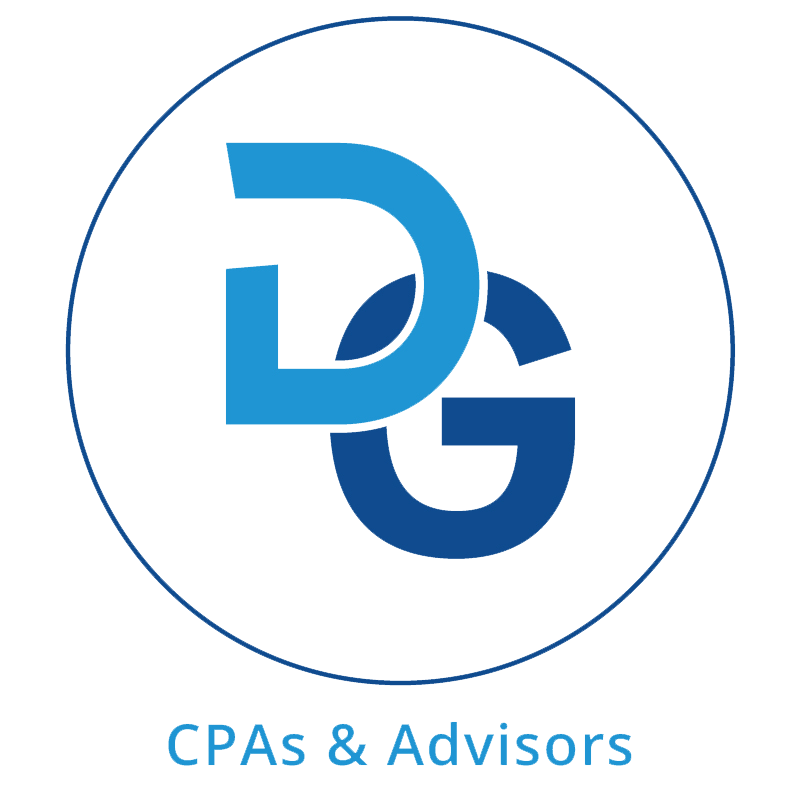Government
Government
August 24, 2017
by Gregory S. Dowell August 24, 2017 We often have noted the results of the fraud studies that have been performed by the Committee of Sponsoring Organizations of the Treadway Commission (“COSO”), which is co-sponsored by the Academy of Certified Fraud Examiners (“ACFE”). Those studies consistently have pointed out a few interesting results: Small business is more susceptible to loss from fraud. The perpetrator is almost always a trusted employee. The average dollar-amount loss from fraud is significant, and can be detrimental to the life of an entity. Despite these consistent results, we have noted as CPAs and advisors that many businesses still feel like they are bullet-proof from fraud. Even though fraud studies show us conclusively that fraud tends to be committed by the employee who is viewed as beyond suspicion, the most trustworthy, and the most committed to the organization, time and time again we have business owners tell us that their trustworthy, committed employee would never do such a thing. We remind those business owners that exactly the same thing was said about those poor employers who were defrauded by their loyal employee. What far too many business owners (I’m using the term “business owners” broadly, as this applies to charities and governments as well) fail to realize is that putting in good internal controls, and then spending some time checking on adherence to those controls, is fundamental to running a business in a sound and responsible manner. No employee, who is motivated by good intentions and the employer’s best interests, will have a serious objection to being submitted to internal controls. In fact, an employee who vehemently objects is a sign that something may be amiss. Good controls and processes, when put into place, become part of a business’ culture. Those controls raise every employee and stakeholder’s respect for doing things properly and in a transparent manner. Those good controls will pay for themselves many times over in the life of the business, by preventing fraud, by presenting opportunity (think of how pleased a banker with money to lend would be to understand that a business takes control seriously), and by resulting in a higher valuation. Yes, potential buyers will be impressed by the processes in place, will place more reliability on the financial statements, and will ultimately place a higher value on a business that has good controls. While the fraud studies by COSO are the most widely-publicized, multiple studies done by a number of organizations report these same results. In a recent article by Rachel Layne for MoneyWatch titled “Your company’s biggest thief might be the most loyal-seeming employee”, she cites a study by the insurance firm Hiscox, and the results from the previous COSO studies are again confirmed. As noted by Ms. Layne, the study reports that most thefts extend over long periods of time – think in terms of years – and may include smaller amounts of thievery over and over and over again. The study shows that 29% of employee thefts took place over more than 5 years (37% for those in the financial services industry). Vendor losses are the largest – think of an employee who sets up a fraudulent vendor in the employer’s system, and then systematically pays them over months and years. This study found that the average theft stretching over 5 years or more was $2.2 million. In declining order, the largest frauds occurred in financial services, government, manufacturing, real estate, labor unions, and “other services”. All of these fraud studies consistently show that the thief was most commonly the most trusted person in the organization, the person who never takes vacation (which is important if you need to cover your tracks every day), an employee involved in the accounting department, and have a median age of 48 (older employees tend to be around longer and have advanced in the company to a position that gives them knowledge and the access to commit fraud). The study also notes that, again, small businesses are the most at-risk. So what should be done? The answer is relatively simple: Engage your CPA firm to conduct an internal control study and make recommendations for change, as well as for ongoing monitoring. That monitoring should include internal monitoring by other employees, but should also include periodic monitoring by the CPA firm. Even if the benefits and positive financial impact noted above is completely ignored and one only thinks about the immediate costs of control, there is obviously an upfront and ongoing cost to putting in these controls, but the cost from not having these controls can be staggering. The sad thing is that these losses are preventable, but not if business owners, governmental leaders, and boards of directors fail to take action.

January 13, 2017
by Gregory S. Dowell F or those who harbor superstitions, writing an article about risk on the day of Friday the 13th might seem to be ill-advised. On the flip side, perhaps there is no better day to consider the issue than on a date famously associated with bad luck. Many of us join boards of charitable organizations or nonprofits so that we can serve a cause that is important to us. Sure, your business may also encourage such participation or you may want to bolster your resume as well but, in the end, the vast majority of us choose to serve because we care. In virtually every case, service on a board comes without monetary compensation. It is a surprise, then, for many people when they consider that they can actually be sued for their actions when serving on a nonprofit or charitable board. In such a situation, it would be the exact opposite of compensation, in that a board member ends up paying for the pleasure of serving for no monetary compensation. Depending on the nature of the entity’s underlying work, the risks of serving on a board can be very real. Consider, for instance, a board member who might serve on the board of an organization that builds houses for the homeless. Many things can go wrong in the building of a home, and construction is an inherently dangerous business. If someone is injured or killed at the work site, it could be quite likely that a board member could be sued for damages. Recognizing these risks, director’s and officer’s insurance (commonly called D & O insurance) is offered by some insurance carriers and can be purchased by a board to protect its members. While the insurance premiums may not be expensive when compared to the potential risks, bear in mind that the entity asked to pay for the premiums is probably operating on a very tight budget. Regardless of the budget, however, those who serve on nonprofit and charitable boards must consider their exposure. Realistically, even a very small organization may want to prioritize this payment, even if it means that board members individually agree to chip in from their own savings to pay for the premium. To determine if D & O insurance is necessary, a board should reflect on its inherent risks and the risks of the organization. Before agreeing to serve on a board, an individual should stop and consider the risks. The more one knows about the organization and how it operates, the better. These are be some issues to consider: What does the organization do – from a granular level on up? What other entities or businesses are involved in the business processes of the organization? Is the underlying nature of the organization’s mission fraught with risk? Does the organization have strong leadership and a board that is involved? A strong leader with a weak board can be a recipe for disaster. Does the board meet regularly and maintain good records of its activities? Does the organization and the board insist on good internal controls over its financial functions? Are duties segregated as best as possible, and is there reasonable oversight of the accounting and banking functions? Is the organization in compliance with its Federal and State tax filing requirements? Is the organization properly registered with the State’s governing body (often, the Attorney General or the Secretary of State)? Has the organization complied with the need for a certified audit of its financial statements? Will you allocate the necessary time to execute your responsibilities and to be involved at an appropriate level? Does the volunteer work put you in a potential conflict position with any other volunteer work you do, or perhaps with your business interests or your employer? Does the board have D & O insurance and, if not, why not? Serving on a board can be fulfilling, perhaps even life-changing. Most importantly, it can be incredibly rewarding from a personal standpoint. It is an important obligation and should not be lightly undertaken. That said, most of us need to consider the risk of service and determine if we want to accept that risk. Just as we accept that we buy house insurance to protect our homes and property, life insurance to protect our loved ones, and health insurance to protect our health and our wealth, we should also consider the need to buy D & O insurance if we choose to serve on a board.

December 30, 2016
by Gregory S. Dowell H aving a great idea or a passionate cause is where most ventures start, but it takes much more than an idea or passion to bring about financial stability. Do you want to insure that your business or nonprofit has a great chance of surviving financially? Do you want your business or nonprofit to run efficiently and to have processes and policies in place that insure its fiscal security? Do you want to attract and retain good employees? A September article by Sandi Matthews in CGMA titled “5 Steps to Strengthen Internal Controls at Small Businesses and Not-for-Profits” highlighted 5 areas that small businesses and nonprofits can concentrate on to make improvements to internal control. Much of our practice is spent dealing with the owners of small businesses and directors of nonprofit organizations, and we confirm that many small businesses and nonprofits often eschew good internal control practices and policies. Even though these are typically very intelligent and savvy executives and they know that there is value in maintaining good controls, they often perceive that there is a lack of time and resources to implement good internal controls. In some cases, they perceive a lack of risk (“mycontroller/CFO/treasurer/bookkeeper/general manager would never steal” from me) or ultimate value (seen as a trade-off of the cost of controls compared to the perceived payoff) from maintaining good controls. Ms. Matthews cites the latest report from the Association of Certified Fraud Examiners that notes that organizations with fewer than 100 employees are actually more vulnerable to fraud than other organizations. The median annual fraud loss of $82,000 for religious or charitable organizations is staggering. Perhaps even more important than the actual fraud loss to a church or charity is the negative public perception that follows such an event, and the risk that future donations suffer. The five steps pointed out by Ms. Matthews come from the Committee of Sponsoring Organizations of the Treadway Commission’s (COSO’s) report titled “Internal Control – Integrated Framework”. These steps can be applied to any organization: Set a strong internal tone – fraud is most effectively caught by internal controls, rather than by external parties, such as auditors. Management and the board should set clear and consistent examples for the entire organization. Provide a formal system to report concerns, without fear of reprisal – out of all the tools to find fraud, tips from insiders are the most effective at rooting out fraud, so the goal is to make it as easy as possible for that information to flow through the correct channels. Employee manuals should be updated to include reporting process, new hires should be purposefully exposed, and a formal whistle-blowing policy should be enacted. Importantly, these policies and processes should also be reviewed and discussed openly with all employees periodically. Be attuned to happenings in the organization – management should listen and be aware of pressures that could possibly compromise an employee’s decision-making. Some of these pressures could include unrealistic or aggressive growth goals, poorly designed or monitored incentive compensation plans, or unbalanced workloads. Focus on open communications – in addition to creating a more positive work environment, building relationships and trust in an organization will foster good communication, which will create an environment that will more easily spot fraud. Be sure to listen to feedback raised by employees when implementing checks and balances, and be sure to explain the business rationale for the process in a way that is non-threatening. Consistently enforce policies to promote fairness – regular discussions and training for new employees should be held regarding company policies. References and background checks should be considered before bringing on new employees, particularly for those who will be involved with sensitive accounting or personnel functions. Segregation of duties and checks and balances should be adhered to and respected. Most computer systems will provide access logs and reports, which should be periodically reviewed. If policies are unwritten, take the time to document the essence of those policies, perhaps in bullet-point format. The five points above are intended to be broad so that they can be adapted to any organization. From our experience, we stress that adopting these five steps is not the goal; rather, implementing the five steps is the goal. Implementation means that these are institutionalized, discussed periodically, and become part of the fabric of the organization.
Ready to become a client?
Leave us your info and we’ll get right back to you.
Sign up to our newsletter
Thank you for contacting us.
We will get back to you as soon as possible
We will get back to you as soon as possible
Oops, there was an error sending your message.
Please try again later
Please try again later
Contact Us Today
Dowell Group, LLP | All Rights Reserved |
Created by Olive + Ash.
Managed by Olive Street Design.

